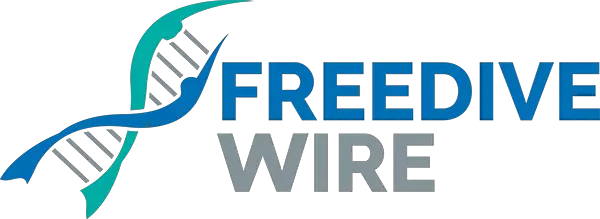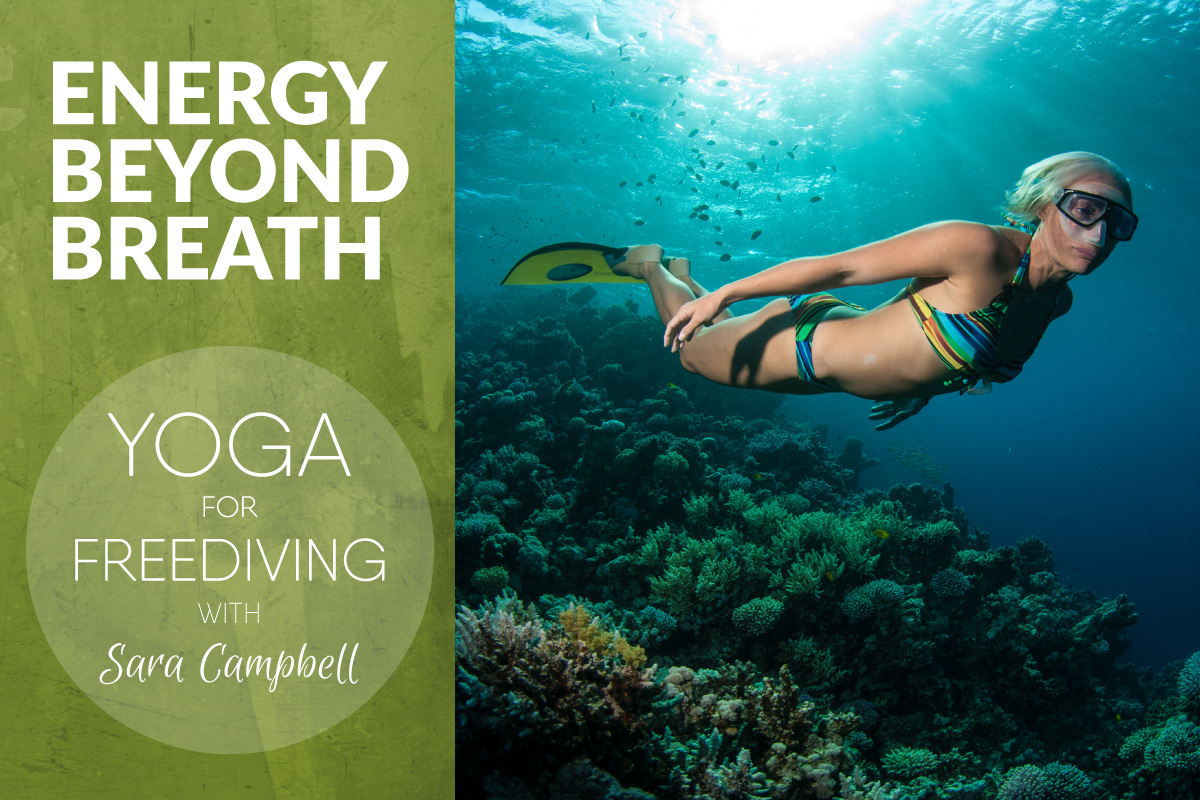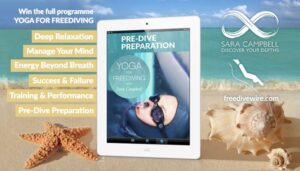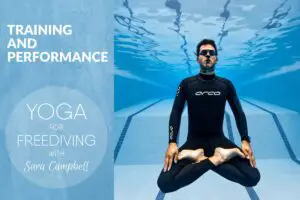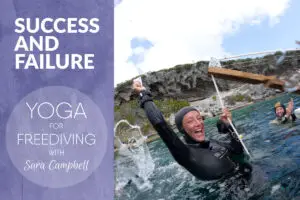Energy Beyond Breath is the third part in the Yoga for Freediving series by Sara Campbell. Energy Beyond Breath delves into the science and belief behind pranayama. From this philosophical framework it gives you a powerful set of meditations to use for your freediving. As with the first and second parts of Yoga for Freediving, Energy Beyond Breath contains meditations and lectures specific for the course and over 20 bonus videos.
Nadis
Nadis are the channels in your body through which energy flows. Under the correct conditions the energy of Kundalini will uncoil and flow through your body. This concept is central to the meditations in Energy Beyond Breath.
The videos
The first video in Energy Beyond Breath teaches you a pranayama that will train you to clear the nadis, so energy may flow freely. The second video is a long visualization (one of my favourites) which will teach you how to be aware and relax every part of your body. The third video is a pranayama based meditation. This meditation will teach you to look inside where you would rather look outside for causes that either bug you or help you (I will be successful/beautiful/better after ….). The fourth video teaches you a series of kriyas. You can think of kriyas as moving meditations that work towards a specific goal. This video is perhaps the strongest in this series, and teaches you how to create and conserve pranic energy. Especially it is meant to make sure you do not waste any energy on the meaningless things in life. This will help you during your dives as well as in every day life . The last video in the series is a mantra meditation that will teach you better diaphragmatic control.
What I really appreciated in Sara’s videos was how she managed to use Sanskrit. Energy Beyond Breath teaches you mantras that help you focus and guide your meditation practice. Timing will no longer be an issue. This is something I have struggled with when doing breathing exercises using a phone app or a watch. Sara presents the alternative of using Satnam in a practical pattern to stay on track with your breathing pattern. This technique allows you to focus on the exercise and enter a meditative trance without having to open your eyes to check a watch.
Similarly, invoking the word Har whilst doing belly pumps allows you to feel the correct sensations when repeating the words. We have to give credit to the Yogi and their ancient practices and admire how they were able to connect a physical sensation to vocal sound. For myself at least, when saying the words of Har (either out loud or in my mind) I can really feel the diaphragmatic pump and movement Sara is referring to. This is similar to the nasal vibrations of saying the famous Ohm and the amazing sensations linked to it. This includes, although unknown to the Yogi at the time, the connection between this type of nasal breathing and the beneficial production of “nitric oxide in cells that line the paranasal cavity”.
Finally, I would like to also mention the Yoga Nidra and its powerful visualization techniques. I seldom used visualization techniques in my static trainings, but I now see the benefits. In focusing on different parts of your body you (at least I do) reach a sense of relaxation. What do I mean by this? I find that by being self aware of my foot or leg, I can focus on realizing it’s presence of existence as one of my body’s limbs and then by accepting this I can “shut it off” and focus on the next part. All I really am in this mindframe is a heart and a brain. I even imagine myself as just a torso with a head stuck on top of it, floating limbless on water. This is very powerful, at least to me, and can really help induce a state of trance and calmness. At times, when a breath hold is uncomfortable and the contractions become unbearable, this visualization technique helps to take the focus away from those “painful” sensations and concentrate on the other parts of my body. Sara’s exercises are excellent and I highly recommend them.

Personal experience
Jaap:
I have spent the last decade pursuing education in departments of science in both the Netherlands and Canada. Hence, my feathers get a bit ruffled when talking about more philosophical things like cosmic energies. However, the meditations in this course are very powerful. They are perhaps also not for beginners. You need a fair level of comfort with mantra meditations to be able to fully immerse yourself in these exercises. If you are interested in Yoga for Freediving, I suggest you start with part one or part two (links below). However, all the material you need to start is given in this course so you can dive right in if you feel ready for Energy Beyond Breath. You will also need to have a fairly private space (a bit more soundproof than my noisy apartment) to be able to do all the exercises in this course privately, as you will be fairly loud!
Luca:
My background is in sciences and engineering. Because of this I have always taken scientific evidence above any mystical religious belief. However, I do believe that there is some scientific understanding of a concept that has been practiced for thousands of years. This practice being yoga, especially pranayama. I also have an immense appreciation for Indian culture and the language itself, and as I mentioned earlier I do believe that there is a strong connection between vocal pronunciation of Sanskrit words and a physical stimulus. I have spent enough time in India, practiced yoga on the banks of the Ganges in Varanasi, and spoke to many “enlightened” yogi to appreciate this art, which I practice myself quite often. But I am aware of my limitations in knowledge and translation.
The only difficulty I’ve had is really to understand the meanings behind the Sanskrit mantras. I understand the meaning of Ohm (it has been explained to me and I’ve read Hesse’s Siddhartha enough times to have a basic understanding). However, I still only vocalize it in meditation because I like the vibration it creates in my nasal cavity. Not because I know what the Yogis meant when they use it. Similarly with other Sanskrit terms, it can be difficult for the average freediver to incorporate them in his or her practice in a genuine way. One could just simply say the words, the same way most yoga practitioners execute mundane positions and call it enlightening. This is not the case in freediving, the meditative trance we seek must be true, genuine and pure. It must be something we believe in entirely. We should always doubt and question our practice, in this case: am I saying these words because I’ve learned to do so or because I believe in their powerful meaning. Therefore, I found myself disconnected with Sara’s practice at times because of this.
Of course this could be because I am a beginner in freediving with respect to Sara and her practice. We have to remember that pranayama and hatha yoga, contain a physical and mental component and are difficult to master. One we reach the kriya yoga, we must go beyond body and mind. This is the “spiritual” aspect and perhaps the most difficult to attain.
- Yoga for Freediving (home page)
- Part 1: Deep Relaxation (Freedive Wire review)
- Part 2: Manage Your Mind (Freedive Wire review)
